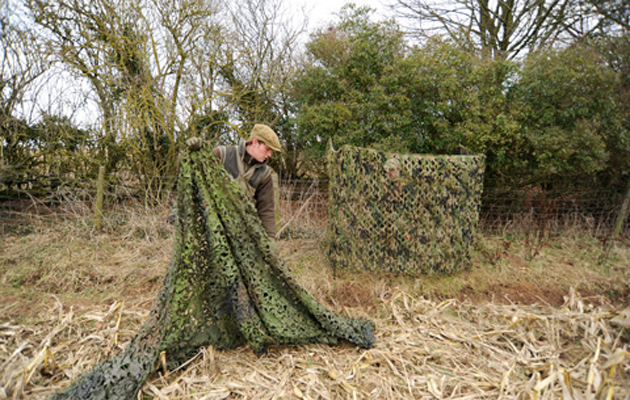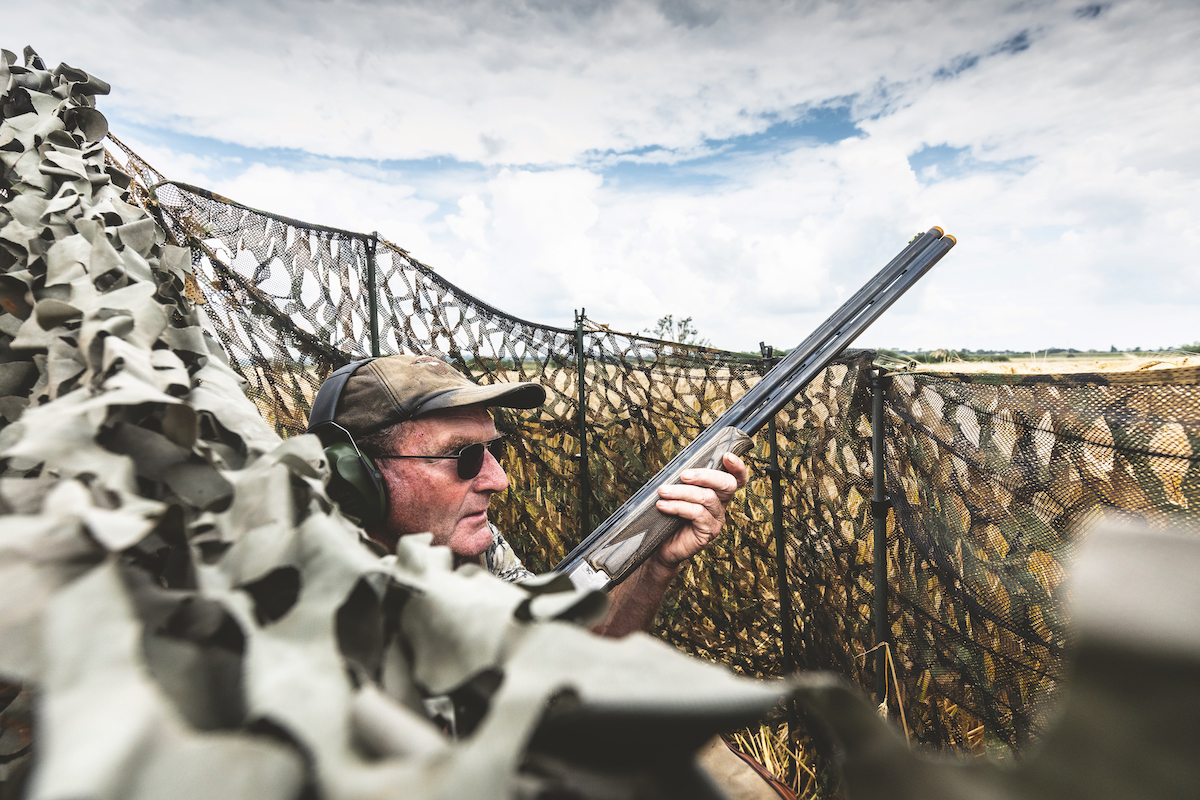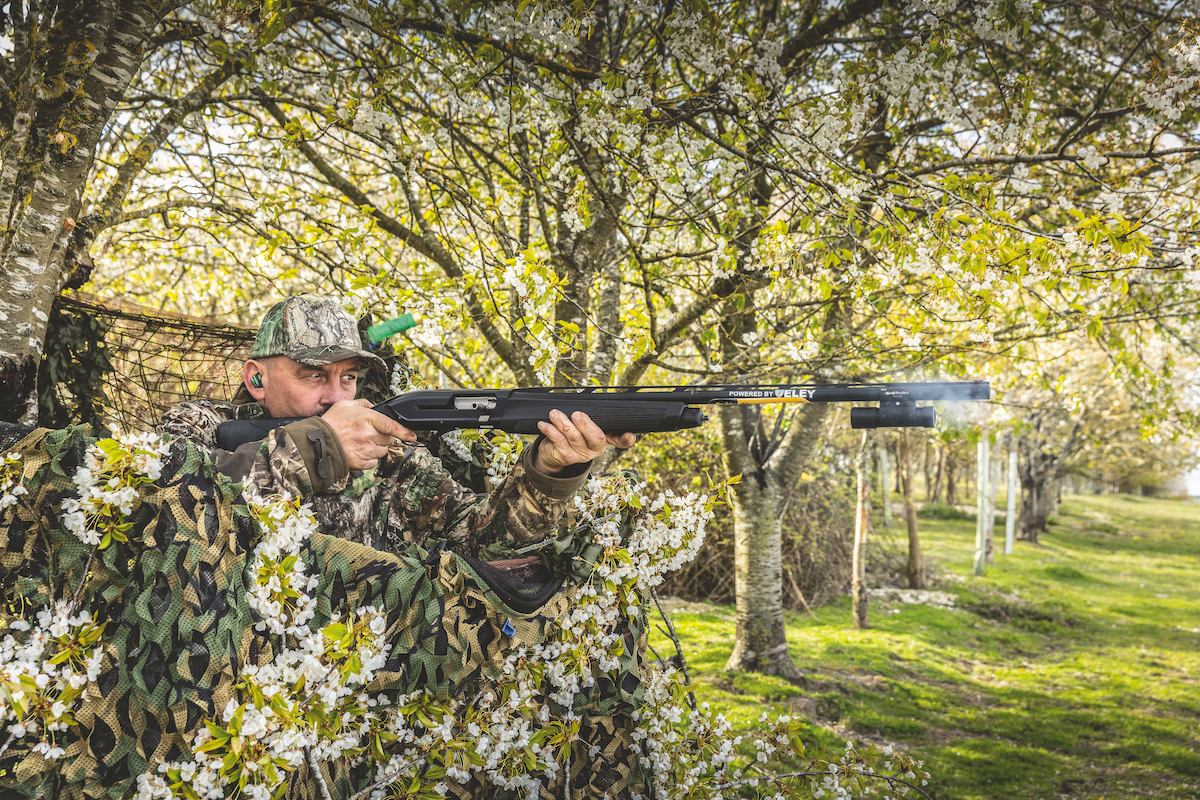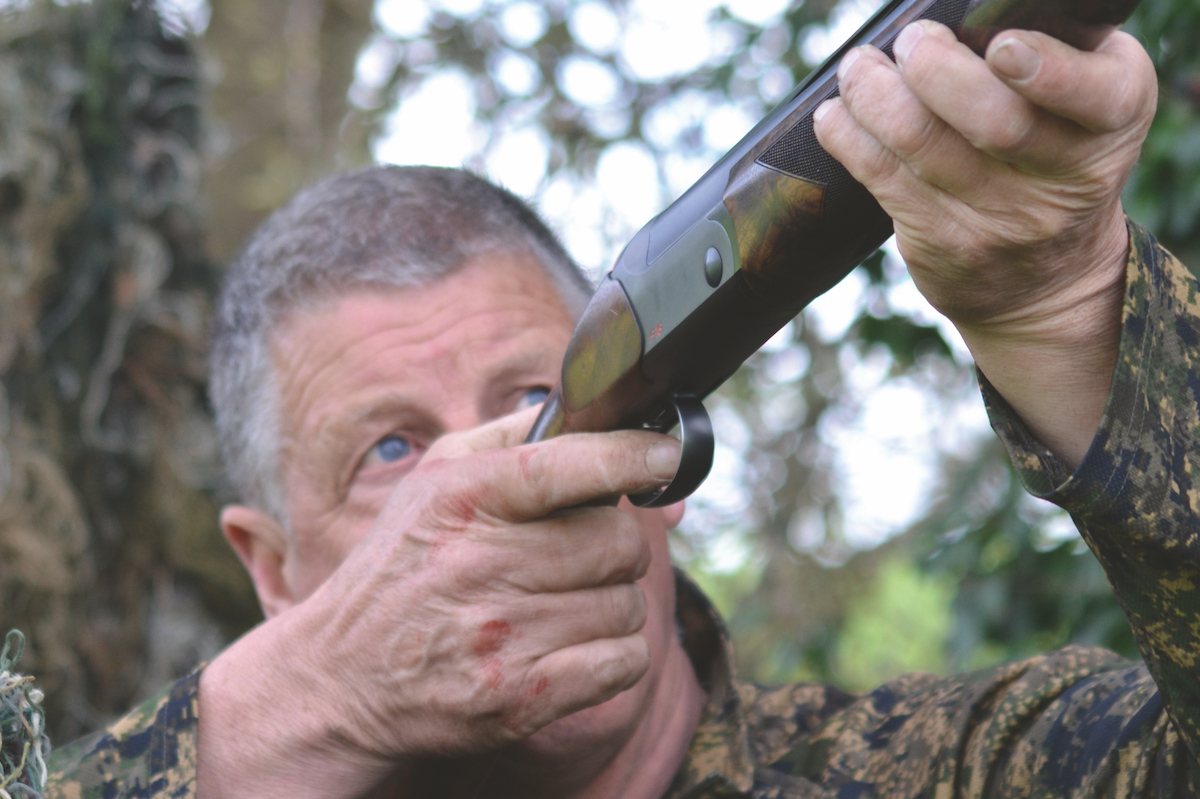Top pigeon shooting tips from Will Garfit
Pigeon shooting expert Will Garfit shows you how to make the most of your sporting day with some practical hints and advice.

Go on a reconnaissance mission
Making sure that you have the best spot in the right field is the most important element. You may build the perfect pigeon hide, set out a life-like decoy pattern or be the finest shot, but if you are not in the best place on the right field you will be unsuccessful.
Ideally you should carry out your reconnaissance the day before you are going shooting, so you can watch the pigeon movement to the field. If the farmer has phoned you to say where he has seen pigeons then you’re ahead of the game. Otherwise you could be looking out for flight lines or touring the countryside surveying fields.
The second thing to do is to work out which is the pigeon’s favourite area of the field to feed. Look out for natural features to place a hide so that it effectively covers the flight line or lines of birds arriving to feed.
It may be a tree in a hedgerow or clump of trees in the middle of the field, but if the birds are favouring the middle with no obvious feature you have to get out there and build a hide in the open.
Remember that an impromptu hide out in the field will probably be more effective than the perfect hide in the wrong place. Do not make the mistake of building a hide convenient to where you park or it could mean you spend the rest of the day watching birds cruise in to feed at the other end of the field.
Have the right kit ready
You could be looking at a long day out so make sure you take everything necessary.
Depending on the season you will need a selection of camouflaged nets. Hide poles are conveniently telescopic these days and need strong kicker plates to help erect them firmly in the ground (guy-ropes may also be needed in a strong wind).
You’ll also need to make sure that you’re sitting comfortably, or it will be hard to concentrate and you may be inclined to cut your day shot. I think that a light swivel chair works best.
As for pigeon decoys, there are plenty out there but the most natural are of course dead birds kept from a previous shooting day.

Dead pigeons from previous outings make the most natural decoys
What about a gun for pigeon shooting? And cartridges?
Here I would advise you to take any gun in which you have confidence and which is a good fit. That could be an over-under, side-by-side or semi-automatic. My favourite cartridge for pigeon shooting is the 28gram No.7½ shot, which kills longer birds well, as it produces a dense pattern of shot. This more than compensates for the reduction in penetration with the smaller shot size. The woodpigeon is a small bird with light feathers and is killed cleanly if hit by the dense pattern of No.7½ shot. The important thing is to concentrate on where you put the shot – you won’t kill if you miss, whatever cartridge you are using.
Other kit I judge crucial: ear defenders, sunglasses, a clicker to count shot birds and a radio. Also sacks for carrying the dead birds, water for the dog, an extra layer (sitting still can get cold) and waterproofs. (If you don’t take any then the weather is bound to turn inclement.) A folding saw and secateurs are useful for hide building and I have a pair of mini binoculars to watch distant pigeon or other interesting birds.
Keeping your energy up
Pack your favourite sustenance: tea, coffee and a packed lunch – something easy that you can hold in one hand and put down instantly should a pigeon come into view.
On the day
So we arrive on the field selected after careful reconnaissance. The month is March and the field has been drilled four days earlier with spring barley – a fact we gleaned from the conversation with the farmer. The pigeons would have perhaps taken two or three days to find it and build up on the field. Today they will hopefully return.
We stop at a vantage point to watch for a while. Though we did this yesterday, the wind has veered from southerly to westerly, so we need to observe how pigeons approach. The flight lines are similar but the birds are favouring the western upwind side of the field today. This is good because there is a tall hedge on that side in which to make our hide and also a single ash tree that makes for a good focal point (what Archie Coats would call a ‘sitty’ tree).
Before planing down to join the group birds often like to sit in trees by a chosen field, checking that the area is safe.
We decide to build our pigeon hide at one side of the tree so we can cover birds both over the decoys or coming to the tree. Our vehicle is going to be left in the gateway at the end of the hedge so we will need to carry out kit to our chosen spot. This is where the reconnaissance of the previous day pays off.
Building the pigeon hide
We arrive at the spot in the tall but draughty thorn hedgerow. We need to erect a windbreak behind us to keep warm as there is a cool breeze. Therefore, we first set three or four hide poles to support an old canvas sheet I carry in the netting bag.
Then we erect other poles on the field side to make a hide large enough from which to shoot comfortably and have cartridges, kit bag and space behind for the dog. Sit the dog behind you to protect his hearing from the muzzle blast. If two people are shooting then make the equivalent of two hides side by side to create safe arcs of fire and a physical barrier between you to ensure safety at all times, with nets in place on the poles at a height which covers you but allows you to shoot over the top.
If you like to stand when shooting, the front of the hide will need to be taller than if you were sitting down. Either way, position the top of the net so you can see birds through it so that you are not seen. A hide should do just what it suggests – Obscure you and enable you to take your first shot at a pigeon before it has seen you.
Use any nearby natural cover – grass, dead vegetation, leafy branches – outside your hide to help it be camouflaged into the landscape.
Using the pigeon decoys
As the wind is conveniently behind us we will start with our 15 dead pigeon decoys in two small groups about 20-25 yards out either side of the hide, leaving an area between where we hope the incoming birds will make for. A few decoys about 15 yards out between the groups will in effect produce a horseshoe shape. We will start without any of the toys we may need such as rotaries, flappers or floaters. All these can be important but more so when shooting over standing crops (like rape or peas) where static decoys are less visible. On the bare soil of a drilled field our decoys will show up very well and should be convincing enough to attract pigeons into our pattern coming well into range with confidence. As you shoot more pigeons we will go out and set them up to create a larger feeding flock but maintain the open killing zone in the middle that incoming birds will see as an easy place to intend to land.
How to behave in the hide
If you want to be successful in achieving a bag of pigeons then you need to approach the day’s pigeon shooting like a military operation.
So here you now are. Sitting comfortably in the hide with cartridges within easy reach on one side and kit on the other. You are looking out for birds to approach and are constantly alert but still. Pigeons have very sharp eyes and notice the slightest motion and anything unnatural, so make every movement slowly.

Create the best hide you can – or the pigeon will spot you from a distance
A bird is coming from half left and looks as if it means to join the simulated feeding group of decoys. Its wings are set and you have slowly raised your gun so the muzzle is level with the top of the hide. You have gently moved your position on the seat so your hips are at a 45-degree angle to the position you anticipate taking the shot to ensure the optimum ease of movement of your body. The bird is in range and angles to aim at your open killing zone. You raise the gun to the shoulder in one smooth movement and with a timing of up, two, three, bang, the pigeon collapses leaving just a puff of silver feathers in the air. The perfect shot – no rush, no jumping – just a well anticipated and timed gun movement.
New arrivals
The stage is set, you have your eye-in and another two birds are stalling from high in the sky. An hour later there are dead pigeons all over the place and new arrivals are trying to land beyond the outlying dead birds. We nip out and collect all the birds beyond about 35 yards to ensure the new arrivals come within range.

The pigeon shooter should dress both for the season and for the colour of the landscape
On a long day concentration can be lost which will result in the missing of easy birds. The key is to then throttle back on the difficult chances on doubles and focus intently on one. Make sure of that and then start to build up again as focus and confidence return.
When things don’t go as you want them to
Some days things just won’t go your way and so one of the most important attributes of a pigeon shooter is patience. The pigeons could be finding better feeding elsewhere. Somebody could have just shot your chosen field or one nearby. The weather could be wrong. So what do you do? Sit it out and wait or pack up and leave. It’s best to use your eyes and judge on the evidence. Archie Coats would sometimes sit it out swearing into the pigeon-less landscape. It was the pigeons in the wrong, not him!
Respect the birds
Use your clicker so you know how many shot birds you need to pick up. Always mark out-lying birds that collapse dead, maybe several hundred yards away, or those wounded birds in the ditch or the one that just manages to fly to a tree in the opposite hedgerow. Keep these pigeons in your mind for the end of the day when hopefully your dog will be able to account for them. Pigeon shooting is crop protection for the farmers but our sport and it is responsible and ethical to respect the birds.
At the end of the day
You must empty the sack or sacks of birds so that they can cool. Ideally, they should be put into a cold store but in the absence of one, birds should be laid out on the garage or shed floor to cool overnight. Prepare those you wish to eat, put others in the freezer or arrange for the rest to get to a game dealer. In summer, pigeon will go off very quickly but in the cold of winter they will be fine in the cold store for several days. When shooting in the summer, always remove bluebottle eggs which are clearly visible in open wounds, under the wings, the vent area or in the beak.
You’ll find some pigeon recipes here








